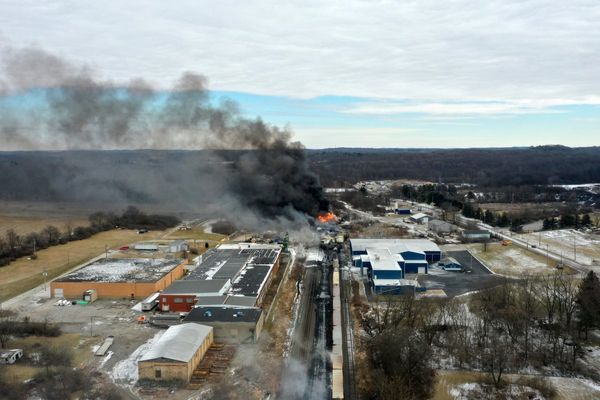
As extreme weather events ramp up across the nation, climate change is also having a devastating impact on the very thing needed to help treat victims.
An Australian world-first study into the effect of global warming on blood donations and supply during disasters has revealed numerous issues facing every stage of the process, from collection to safety, testing and transport.
Severe weather events can cause countless injuries requiring transfusions but also prevent life-giving blood being sourced, according to research conducted by the Australian Red Cross and University of the Sunshine Coast.
The most recent example was February's Ex-Tropical Cyclone Alfred.
Lifeblood, the Red Cross branch responsible for the collection and distribution of blood products country-wide, had to cancel 3500 donation appointments during the devastating storm, said study author Dr Elvina Viennet.
Some 22 donor centres were forced to close their doors across Queensland and northern NSW, while similarly catastrophic floods in 2022 also destroyed a Lifeblood donation centre in Lismore, the UniSC academic added.
"Any major disruptions to the availability or safety (of blood) would most certainly put lives at risk," she said.
"It happens and it seems that it's happening not only more often but it also looks a bit more intense."

Hospitals had to urgently stockpile blood at the height of Alfred's impact and thankfully thousands of donors interstate stepped up to plug the shortfall.
With blood and blood products critical for surgeries, cancer treatments and pregnancy complications, donors are specifically quick to come forward when a calamity such as an earthquake occurs, Dr Viennet said.
However there is less of a "rush of helping" after floods and bushfires, which is particularly pertinent as it's when infection diseases are transmitted.
Climate change is also causing a rise in bloodborne diseases, rendering some donations unusable, she added.
A bacterial program to fight the spread of the Dengue Fever is thankfully showing promising results.

But there have been at least 42 reports of blood transfusion transmission of West Nile Virus, and mosquito's testing positive for Japanese Encephalitis have been found in Brisbane.
"These are linked to climate change simply because conditions - temperatures humidity or the environment - are getting better for the mosquitoes to be established and then to transmit the virus," Dr Viennet said.
Lead researcher Associate Professor Helen Faddy believes authorities could also see issues like blood pressure and hydration exacerbated by heat and donors impacted by psychological distress and climate anxiety.
"At the same time, shifts in disease prevalence and natural disaster frequency could increase the demand for blood transfusions due to conditions such as pregnancy complications, cardiovascular disease and sickle cell disease," she said.
"We could also face greater difficulty in finding the right blood for patients. With rising sea levels increasing migration rates, it's essential to have more blood donors from a variety of ethnic backgrounds, and to increase the number of people who give blood."

Lifeblood is working to review its donor centre network, expanding mobile operations and opening new centres.
It is also looking at innovative methods of killing pathogens present in donated blood and improving logistics, including using drones for blood delivery, as has been done in parts of Africa.
"It sounds like a very sensible approach. If there is a need, I'm sure we will do that," Dr Viennet said of the drone technology.
But with the impact of climate change showing no signs of slowing down, the key remains in building a climate resilient infrastructure.
"With floods becoming more frequent, we have implemented backup plans to protect our blood supply and the distribution network and all the processing centres," she said.
The research has also been published at Lancet Planetary Health.







